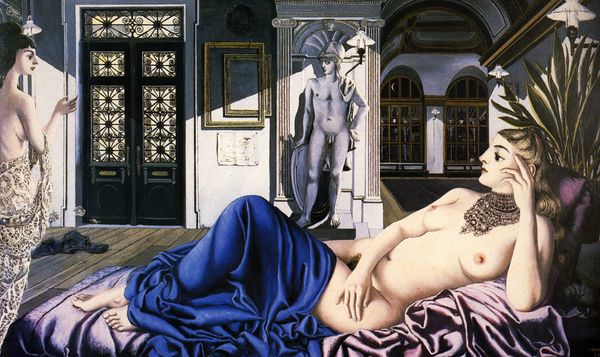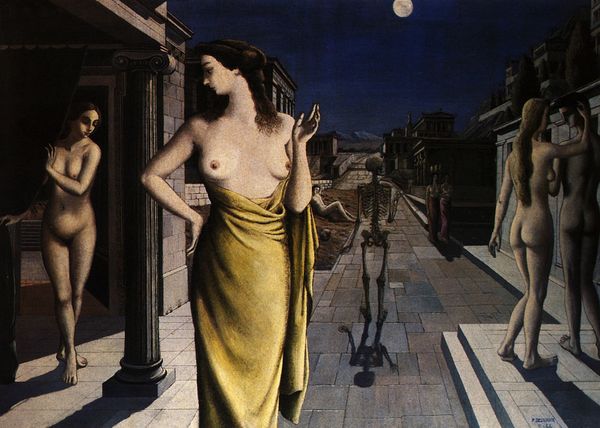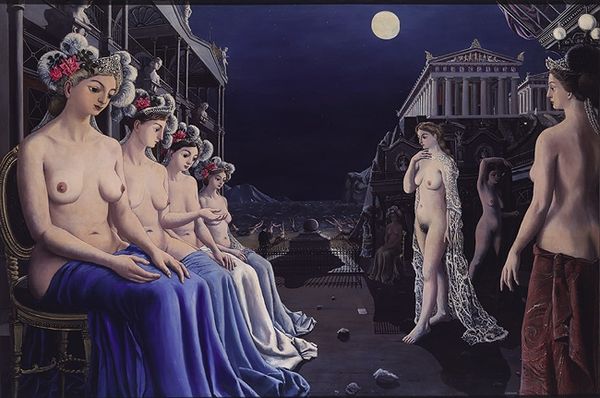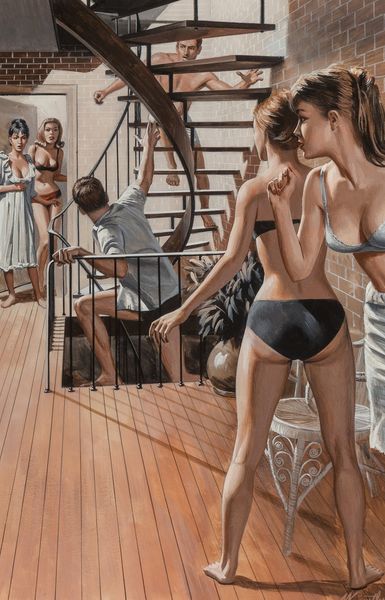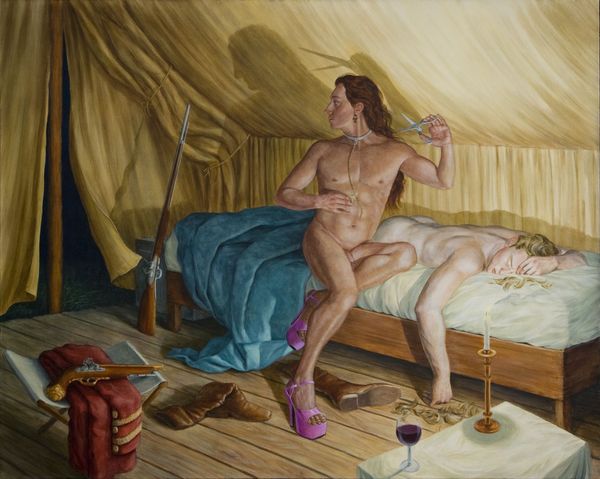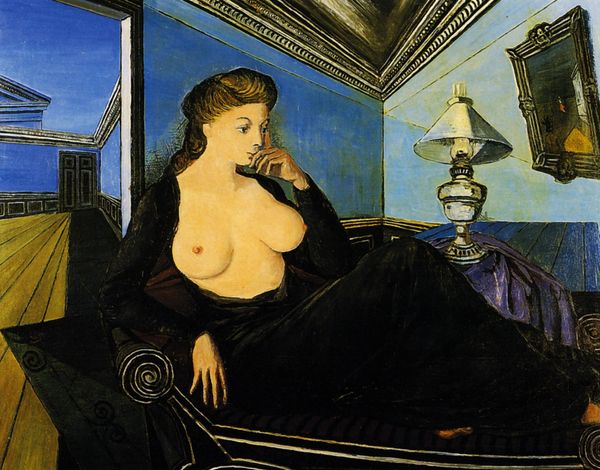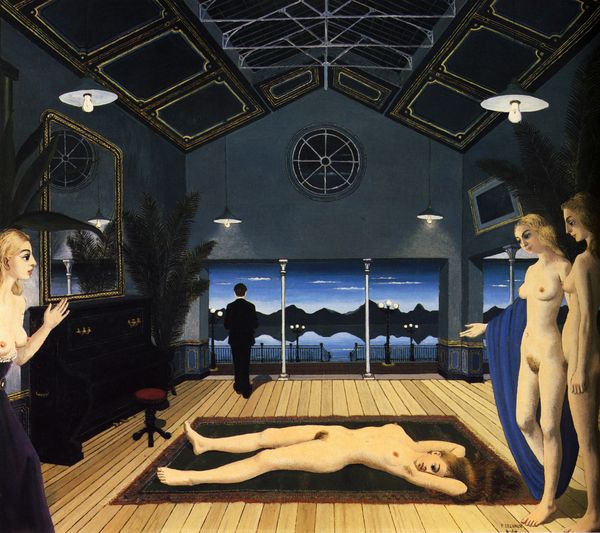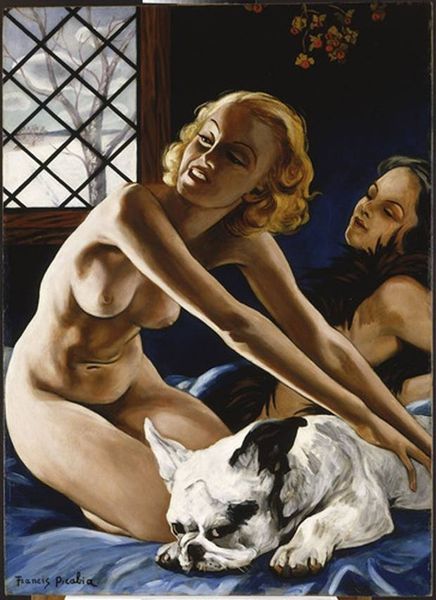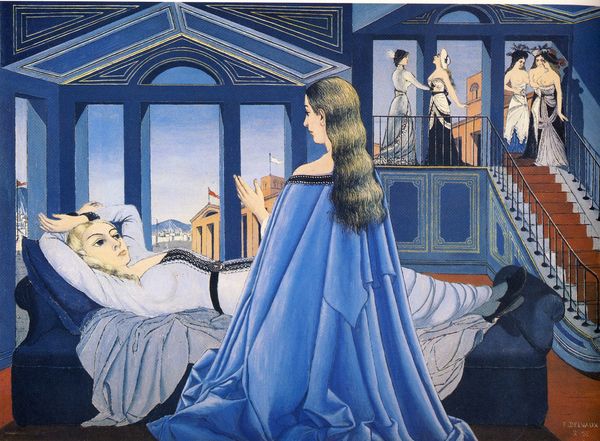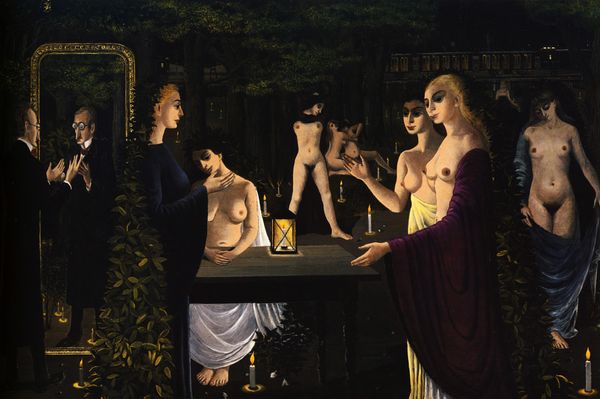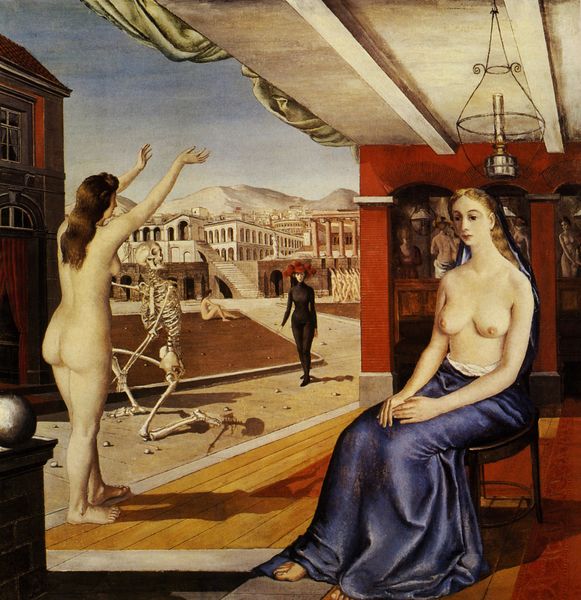
painting, oil-paint
#
allegory
#
painting
#
oil-paint
#
landscape
#
figuration
#
female-nude
#
nude
#
surrealism
#
modernism
Dimensions: 120 x 90 cm
Copyright: Paul Delvaux,Fair Use
Editor: This is "The Balcony," an oil painting by Paul Delvaux from 1948. There’s something both alluring and unsettling about it. Two women occupy a liminal space between interior and exterior, public and private. How do you interpret this work? Curator: Delvaux, deeply influenced by Surrealism, presents us with a dreamscape ripe for deconstruction. Note the classical architecture, the languid nude, and the formally dressed woman. This juxtaposition begs the question: What societal norms are at play here? Editor: Societal norms? Can you elaborate? Curator: Consider the male gaze, prominent in art history. Is Delvaux challenging or reinforcing it? The nude could be seen as an object of desire, but her disaffected gaze and ambiguous gesture disrupt that reading. What power dynamics might be in play between the women themselves? Is the nude less constrained? Editor: I hadn't thought about it in terms of power... The woman in the dress seems trapped in her formality, while the nude, though exposed, appears more self-possessed. Curator: Exactly! And the balcony itself serves as a stage, a liminal space where identities are performed and contested. Delvaux is hinting at the complexities of womanhood and societal expectations. The light is so stark. Does that tell you anything? Editor: It seems to amplify the starkness between the women and in a weird way spotlights both. That it gives the painting an almost voyeuristic feel. This feels very much more modern that I initially understood. Curator: Indeed. It’s a powerful statement about the constraints and freedoms associated with gender, even within the supposedly liberating realm of surrealism. These kind of power statements were, and still are very crucial. Editor: This has really shifted my understanding; seeing the layers of social commentary enriches the experience so much. Curator: That's the beauty of engaging with art through a critical lens. There’s always more to uncover when we consider the societal contexts.
Comments
No comments
Be the first to comment and join the conversation on the ultimate creative platform.
